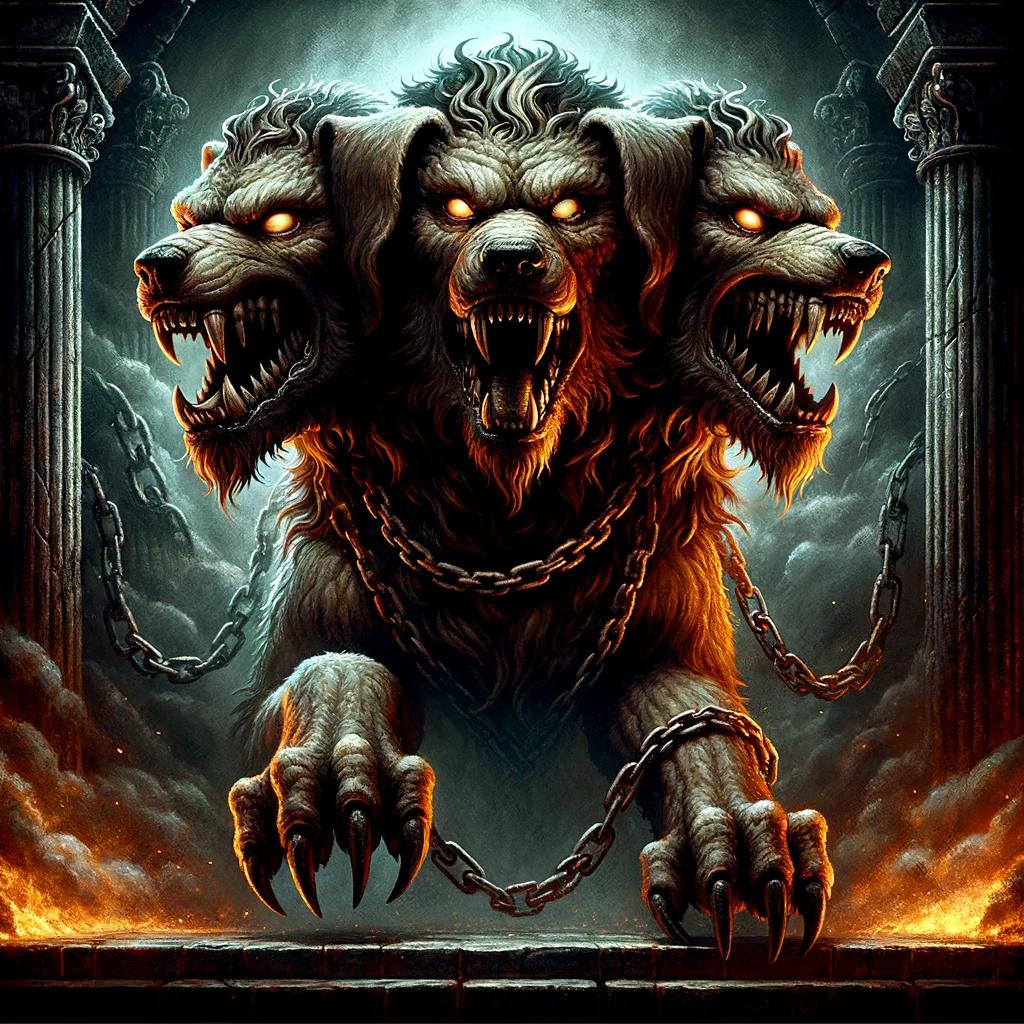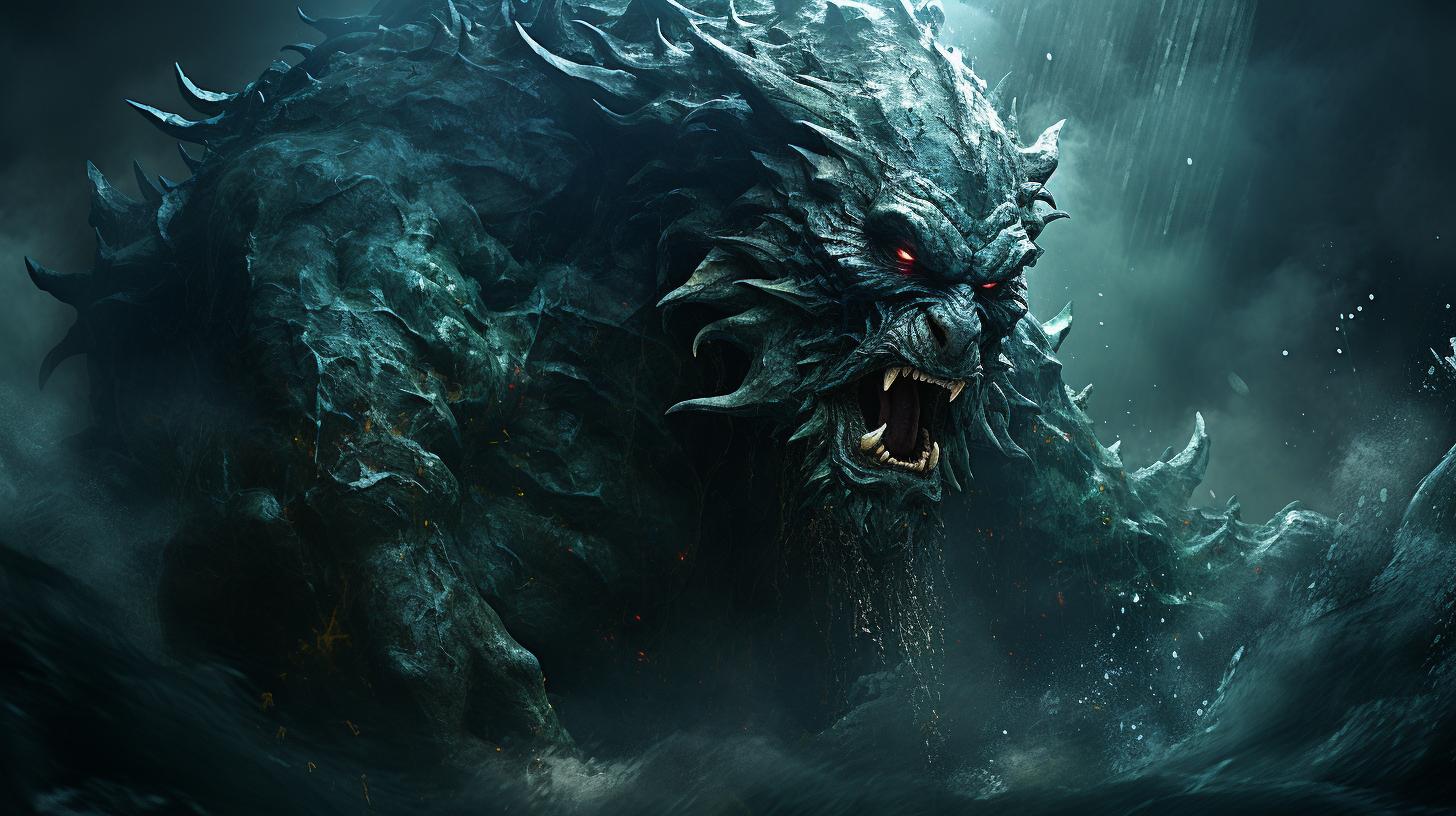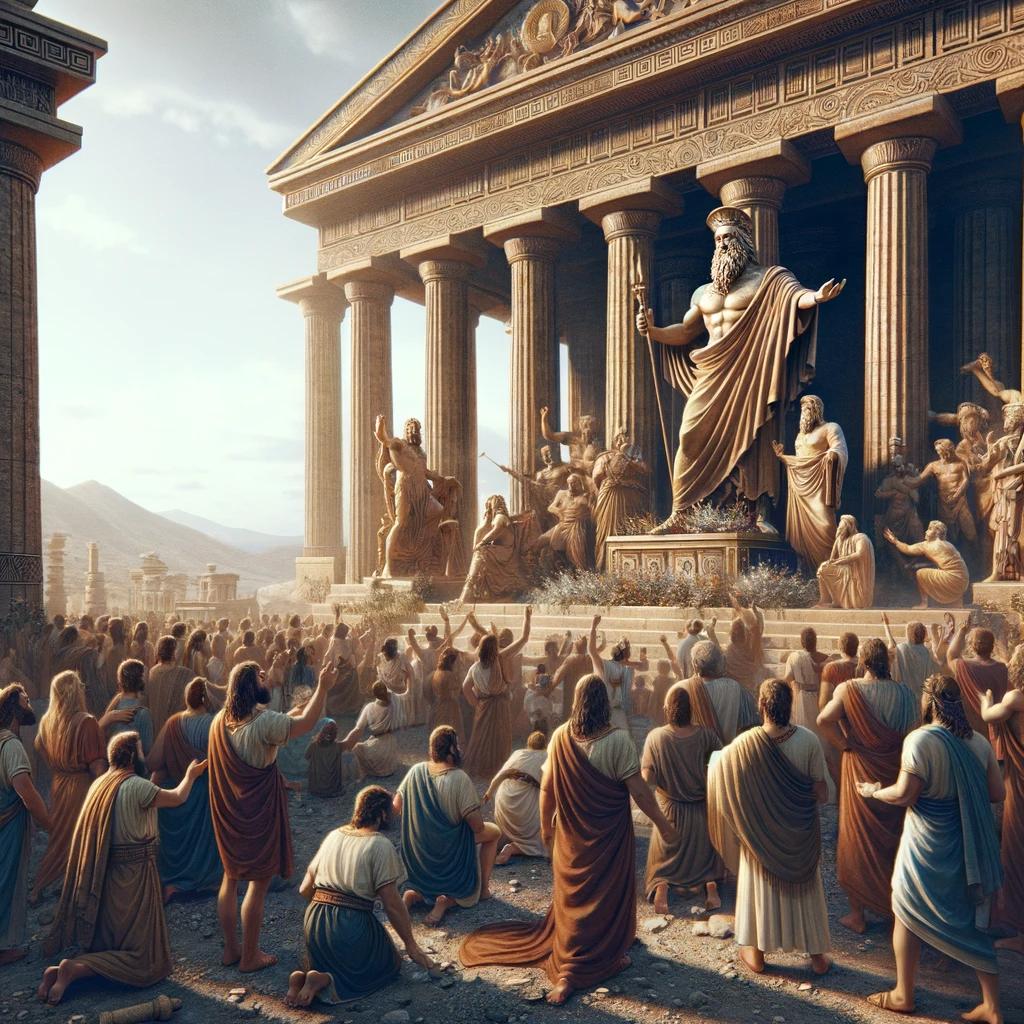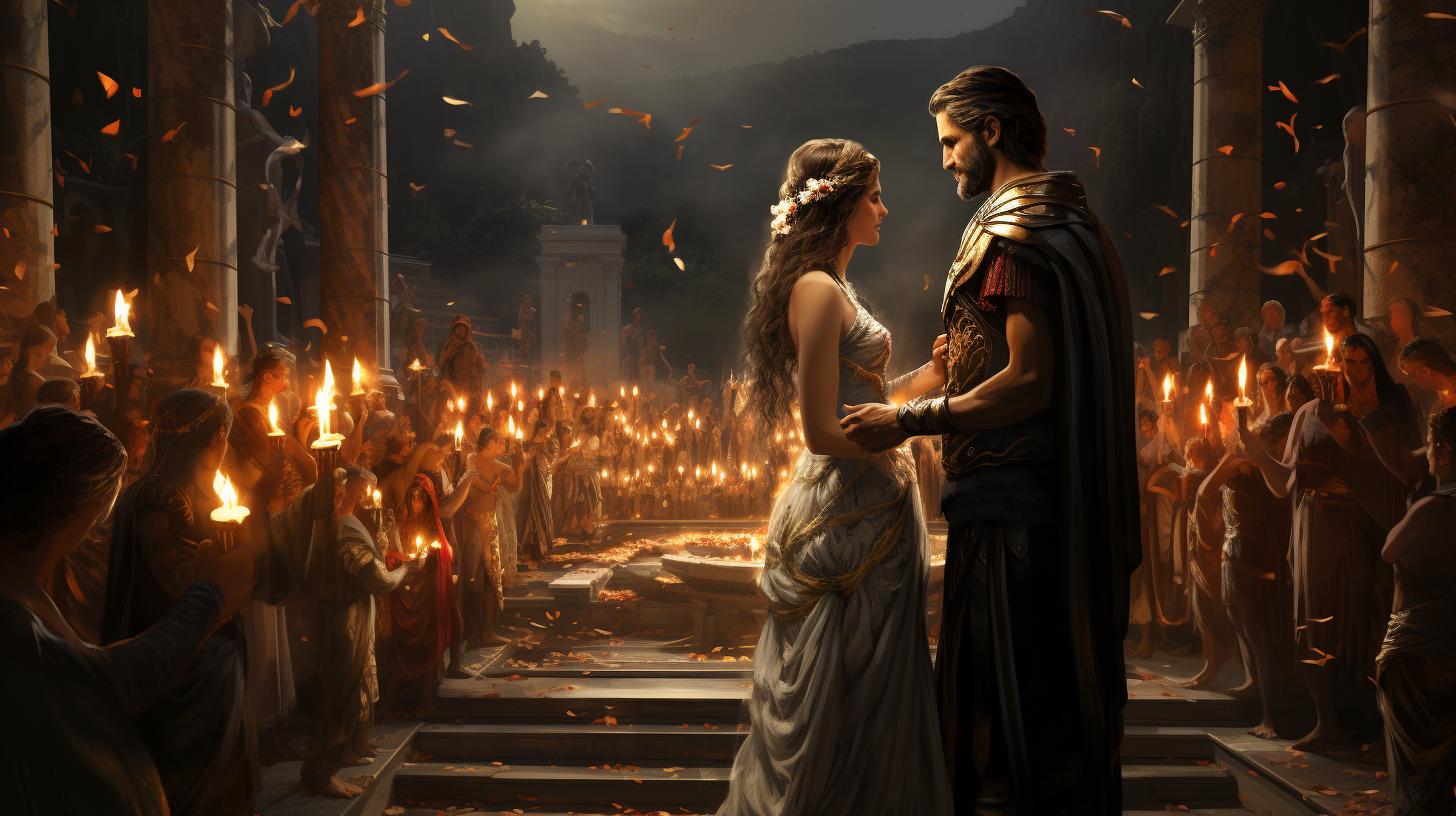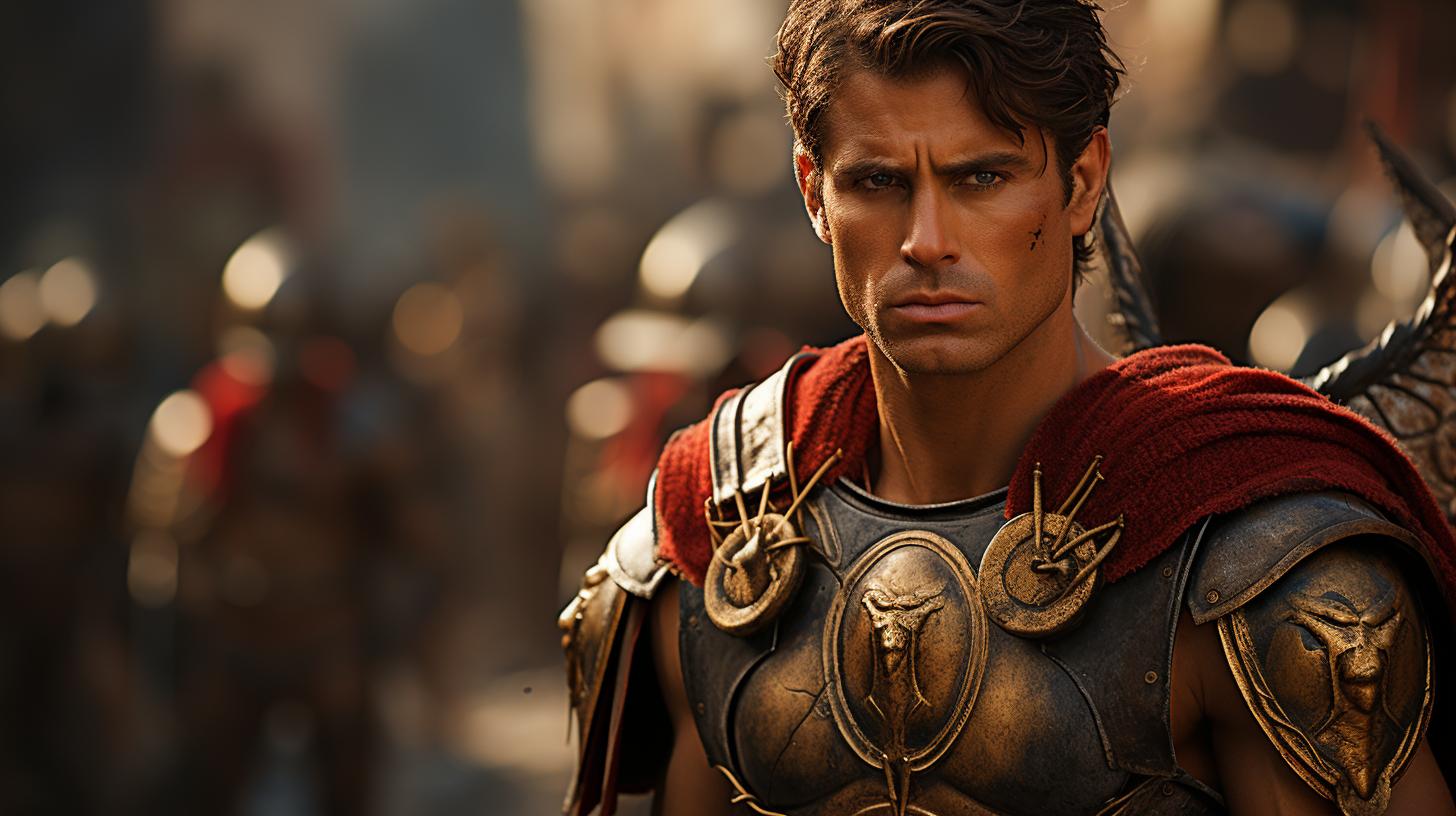Lamia Greek Mythology: Unraveling the Enigmatic Tale of the Child-Eater Queen

Lamia Greek mythology is a captivating and enigmatic figure that has left a profound impact on culture and society. Originating from Libya, she was once a beloved queen favored by Zeus. However, her happiness was shattered when Hera, Zeus’ wife, took her children away, plunging her into madness and fueling her desire for revenge.
Lamia’s story has been passed down through literary and artistic works, portraying her as a child-devouring creature or a seductress. She has also influenced popular culture and contemporary fantasy literature, leaving a lasting mark on Greek mythology.
Lamia’s complexity and enduring presence continue to intrigue and inspire.
Lamia in Greek Mythology
Few figures in Greek mythology captivate and intrigue as much as Lamia. This enigmatic character has left an indelible mark on ancient legends and continues to inspire artists and scholars alike.
In this section, we will explore the origins and legends of Lamia, her grim persona as a demon and child-eater, and her transformation as depicted in various works of literature and art.
Origins and Legends of Lamia
Lamia’s roots can be traced back to the ancient land of Libya, where she was once a beloved queen. According to mythology, Lamia’s tragic tale unfolded when Hera, the wife of Zeus, snatched away her children, driving her to madness and fueling her thirst for vengeance.
The stories surrounding Lamia’s origins and her descent into monstrosity have been passed down through the ages in various literary and artistic forms.
Lamia as a Demon and Child-Eater
In the works of Aristophanes and Flavius Philostratus, Lamia is depicted as a terrifying demon who takes on the appearance of a beautiful woman to seduce and devour unsuspecting young men.
Her insatiable hunger for children led to her reputation as a child-eater, a dark and haunting aspect of her persona that has sent shivers down the spines of generations.
Lamia’s Transformation in Literature and Arts
The image of Lamia as a seductive and dangerous creature has inspired numerous works of literature and art. Poet John Keats, drawing upon the writings of Flavius Philostratus, created his own rendition of Lamia in his poem titled ‘Lamia.’
In this piece, Lamia is portrayed as a captivating temptress, further cementing her status as both an object of desire and dread in the realm of fiction.
Lamia’s Association with Greek Gods
The intriguing figure of Lamia in Greek mythology is closely associated with various Greek gods, each contributing to her compelling narrative.
From her tragic love story with Zeus to her deep connection with Hera and her pursuit of revenge, Lamia’s interactions with the gods shape her character and actions. Additionally, there are other mythological references that shed light on Lamia’s fascinating role in Greek mythology.
Lamia and Zeus: A Tragic Love Story
One of the notable aspects of Lamia’s story is her relationship with Zeus, the king of the gods. In some versions of the myth, Lamia was a beloved queen of Libya, capturing the heart of Zeus with her beauty and charm.
However, their love was short-lived as Hera, Zeus’ wife, became consumed by jealousy and took away Lamia’s children.
Distraught and driven to madness, Lamia’s grief transformed her into a vengeful creature.
This aspect of Lamia’s story showcases the tragic consequences of forbidden love and the profound impact it can have on both mortal and divine beings.
Lamia’s Connection to Hera and Her Revenge
Another significant association of Lamia is with Hera, the queen of the gods.
In some versions of the myth, it was Hera who caused the suffering of Lamia by snatching away her children. This act of cruel injustice fueled Lamia’s desperate desire for revenge and transformed her into a creature that preyed upon innocent children.
Hera’s role in Lamia’s story highlights themes of jealousy, betrayal, and the consequences of meddling in the affairs of the gods. It also adds complexity to Lamia’s character by portraying her as a victim driven to darkness by Hera’s actions.
Other Greek Mythological References to Lamia
Beyond her connections with Zeus and Hera, Lamia is also referenced in various other Greek myths and legends. Lamia’s tragic transformation and her insatiable appetite for devouring children have become archetypal elements of her character.
- In some accounts, Lamia is associated with the sea, drawing parallels with other mythological sea creatures like Skylla and Akheilos.
- Interpretations linking Lamia with serpents have been proposed, suggesting a connection with her monstrous nature.
- Throughout literature and art, Lamia has been portrayed as a seductive, dangerous creature, capturing the imagination of poets, writers, and artists alike.
These various references to Lamia in Greek mythology attest to her enduring presence and the complexity of her character.
As she weaves through different tales, her fascinating role in Greek mythological narratives continues to captivate and intrigue.
Lamia as a Monster and Serpent
Lamia’s portrayal as a monstrous creature with serpent-like features adds an element of fear and danger to her mythology. These characteristics are often depicted in ancient texts and artworks, emphasizing her terrifying nature.
The Serpent-Like Features of Lamia
According to various interpretations, Lamia is associated with serpents, possibly representing her power and cunning. Her serpentine features include a snake’s tail, scaly skin, or even the ability to transform into a snake-like creature.
These characteristics further accentuate her monstrous persona.
Lamia’s Relationship with Sea Creatures and Poseidon
Some interpretations suggest a connection between Lamia and sea creatures, indicating her association with the domain of Poseidon, the god of the sea. Lamia’s origin from Libya, a coastal region, and her possible relationship with sea monsters like Skylla and Akheilos contribute to the perception of her as a formidable being within aquatic realms.
Interpretations of Lamia as a Dangerous Monster
- Lamia’s depiction as a dangerous monster lies in her insatiable desire for revenge and her propensity for devouring children. This monstrous aspect reflects her tragic transformation and the depths of her anger.
- Various interpretations also highlight her seductive and alluring nature, presenting her as a creature who uses her beauty to entice and prey upon unsuspecting victims.
- Through her portrayal as a dangerous monster, Lamia serves as a cautionary tale, symbolizing the consequences of unchecked desires and the destructive power of vengeance.
In conclusion, Lamia’s mythological representation as a monster and serpent accentuates her terrifying nature and adds depth to her character.
The association with serpents and sea creatures highlights her power and connection to the aquatic realm. Lamia’s dangerous persona serves as a cautionary tale, warning against the destructive path of uncontrolled desires and the consequences of seeking vengeance.
Lamia’s Influence on Culture and Society
Lamia’s Impact in Popular Culture and Folklore
Lamia, with her intriguing and terrifying persona, has made a significant impact on popular culture and folklore. Her name has been used in Greece as a means to scare and discipline children, much like the figure of the Boogeyman in other cultures.
Throughout the centuries, Lamia has been depicted as a seductive and dangerous creature in literature, film, and role-playing games. Her captivating presence and mythology continue to fuel the imagination of storytellers, making her a notable figure in contemporary culture.
Lamia in Contemporary Literature and Role-Playing Games
Lamia’s haunting presence has also been felt in the realms of contemporary literature and role-playing games. She often appears as a powerful and alluring character, capable of manipulating and captivating others with her beauty.
In popular fantasy literature, Lamia is frequently portrayed as a skilled sorceress or a creature with unique magical abilities. Similarly, in role-playing games, Lamia is a recurring villain or antagonist, captivating players with her cunning and deceptive nature.
Her inclusion in these mediums reflects the enduring fascination with her mythological origins.
Lamia’s Symbolism and Influence on Children’s Education
Lamia’s mythological symbolism has also found its way into children’s education. Her cautionary tale serves as a reminder of the dangers of vanity, temptation, and the consequences of unchecked desires. By exploring the story of Lamia, children can learn valuable lessons about self-control, empathy, and the importance of making wise choices.
Lamia’s impact on children’s education highlights the enduring significance of Greek mythology as a tool for moral and character development.
Lamia in the Realms of Geography and History
Lamia’s connection to ancient Libya and its geography played a significant role in her mythology and portrayal. According to ancient legends, Lamia originated from Libya, where she was once a beloved queen.
This geographical association adds depth to her character and allows for further exploration of her origins and cultural significance.
Lamia’s Connection to Ancient Libya and its Geography
Ancient Libya, known for its vast deserts and diverse landscapes, serves as the backdrop for Lamia’s story. The mention of Libya as her place of origin not only establishes her connection to a specific region but also highlights the influence of the surrounding natural environment on her mythological persona.
Exploring the geography of ancient Libya helps unravel the context of Lamia’s tale and provides insights into the ancient Greek perception of the region.
Historical References to Lamia and its Significance
Historical references to Lamia offer glimpses into the impact of her story on ancient Greek society.
Various literary works and historical accounts mention Lamia, shedding light on the symbolic and cultural significance attached to her name. These references provide valuable historical context that enhances our understanding of Lamia’s enduring presence in Greek mythology and its influence on wider social and cultural constructs.
Lessons from Lamia in World History and Mythology Education
The story of Lamia serves as a rich source for lessons in world history and mythology education. Exploring her narrative enables students to delve into ancient Greek mythology, understanding its cultural, moral, and historical implications.
Lessons derived from Lamia’s tale can provide educational insights into themes such as the consequences of excessive desire, the portrayal of women in mythology, and the potential warnings contained within ancient narratives.
Lamia: Mythology, Society, and Women
Lamia’s representation of women in Greek mythology offers intriguing insights into the roles and perceptions of females in ancient society. As depicted in various legends, Lamia embodies both beauty and darkness, reflecting the complexities of women’s experiences.
She challenges traditional narratives and defies expectations, highlighting the multifaceted nature of femininity.
Lamia’s Representation of Women in Greek Mythology
In Greek mythology, Lamia’s portrayal as a seductive and dangerous creature highlights the fear and fascination surrounding female power and sexuality. Her story serves as a cautionary tale, cautioning against the seductive allure that women possess.
This representation showcases the patriarchal society’s attempt to control and suppress feminine autonomy.
Lamia’s Cultural and Symbolic Significance for Women
Lamia’s cultural and symbolic significance for women stretches beyond her mythological origins. She embodies the struggles and challenges faced by women throughout history, particularly in terms of societal expectations and the desire for agency.
Lamia’s story resonates with women, representing their longing for freedom, and their ability to defy societal norms and expectations.
Lamia’s Role in Challenging Gender Stereotypes
Lamia’s narrative challenges traditional gender stereotypes by presenting a complex and multifaceted female character. She defies conventional roles and expectations, showcasing the potential for women to possess both light and darkness.
Lamia’s character encourages individuals to question and challenge societal norms, promoting the idea of women as dynamic and powerful beings.
Lamia: Intersecting with Arts, Literature, and Science
Lamia, the captivating figure from Greek mythology, has left a profound impact on arts, literature, and even science. Her presence can be observed in major works of literature, where she serves as a symbol of danger and seduction.
Renowned authors have drawn inspiration from her tragic tale, weaving her into their narratives to explore themes of desire and revenge. Lamia’s allure has also found expression in visual arts, with her portrayed as a stunning yet dangerous creature.
Additionally, her influence extends into the realm of science, where her association with serpents and sea creatures has sparked curiosity and exploration into the natural world.
Lamia’s Presence in Major Works of Literature
In the literary world, Lamia has made her mark through prominent works that delve into her fascinating story. Authors have reimagined her as a seductress with a dark past, mesmerizing readers with her forbidden allure.
From Aristophanes’ “La Paz” to John Keats’ poem “Lamia,” her character has undergone various interpretations, captivating audiences with her irresistible nature. The enduring presence of Lamia in literature speaks to the enduring power of Greek mythology to inspire and captivate the imagination of readers.
Lamia in Visual Arts: Portrayals and Interpretations
Visual artists have also been captivated by Lamia’s allure, portraying her in various forms and mediums. From paintings to sculptures, she has been depicted as a seductive yet dangerous figure.
Artists have skillfully captured her enchanting beauty while hinting at the darkness that lies beneath. These visual representations of Lamia serve as a testament to the enduring impact of Greek mythology on the arts, bringing her complex character to life through breathtaking imagery.
Lamia’s Influence on Science and its Associated Fields
Lamia’s association with serpents and sea creatures has also caught the attention of scientists and researchers. Her mythological connections have sparked exploration and investigation into the natural world, seeking to understand the symbolism and significance of these creatures.
The study of Lamia in the context of science and its associated fields allows for a deeper understanding of the intersection between mythology, folklore, and the natural world. Through this exploration, scientists continue to unravel the mysteries of Lamia’s origins and her impact on ancient Greek culture and society.
Lamia in Religion and Mythology Studies
In the realm of religion and mythology studies, Lamia plays a significant role in examining and analyzing Greek mythology. Scholars delve into the intricate details surrounding Lamia’s origin, her transformation into a monstrous figure, and her association with child-devourance.
This section explores various aspects related to Lamia in the context of religion and mythology research, shedding light on her complex nature and the profound impact she has had on the understanding of Greek mythology.
Lamia’s Role in Greek Mythology Studies
Lamia’s prominence in Greek mythology studies cannot be overlooked. Researchers delve into ancient texts, such as Aristophanes’ “La Paz” and Flavius Philostratus’ “Vida de Apolonio de Tiana,” to explore the depiction of Lamia as a powerful and vengeful creature.
They analyze Lamia’s role as a symbol of destruction, exploring the motifs of jealousy, madness, and revenge prevalent in her story. Greek mythology studies, through the lens of Lamia, offer valuable insights into the dark and complex aspects of ancient Greek culture.
Religious Considerations and Interpretations of Lamia
Religious interpretations of Lamia vary, but she often represents a cautionary tale and a manifestation of sin and corruption. Some religious scholars view Lamia as a symbol of temptation and moral degradation, highlighting her seductive nature and her destructive impact on those who succumb to her allure.
Lamia’s portrayal as a demonic figure also raises questions about the balance between good and evil in religious narratives. These interpretations contribute to a deeper understanding of the moral and ethical lessons embedded in Greek mythology.
Lamia’s Impact on Mythology Research and Exploration
The study of Lamia’s character and her presence in Greek mythology has sparked extensive research and exploration. Scholars seek to decipher the origins of her character, drawing connections to other mythological figures such as Skylla and Akheilos.
They analyze the symbolism and significance of Lamia’s serpent-like features, exploring possible associations with ancient beliefs and practices. Furthermore, researchers investigate Lamia’s lasting influence on mythology as a whole, from her portrayal in literature to her impact on contemporary mythological studies.
Through such exploration, Lamia’s enigmatic presence continues to shape and expand our understanding of ancient mythological traditions.
Lamia and Children: Cultural Teachings and Lessons
In the realm of children’s education, Lamia holds significant mythological significance. Her tales serve as cautionary tales, teaching children about the consequences of greed, envy, and the dangers of straying from the righteous path.
Through Lamia’s story, children learn about the importance of empathy, kindness, and the importance of making wise choices.
9.1 Lamia’s Mythological Significance in Children’s Education
Lamia’s mythological significance in children’s education lies in the valuable lessons her tales impart. Teaching children about the consequences of their actions, Lamia’s narrative emphasizes the importance of making virtuous decisions and understanding the gravity of one’s choices.
By weaving Lamia’s story into their education, children gain a deeper understanding of morality and the repercussions of negative behavior.
9.2 Lamia’s Representation in Britannica Kids Saving Earth
Lamia’s representation in educational platforms such as Britannica Kids Saving Earth further enhances her impact on children’s learning. Through engaging content and interactive mediums, Lamia’s character becomes a tool for teaching environmental awareness, promoting conservation, and empowering children to protect the natural world.
By relating Lamia’s destructive actions to the importance of preserving our planet, children grasp the intrinsic connection between their actions and the well-being of the environment.
9.3 Lamia’s Influences on Children’s Literature and Media
Lamia’s influences permeate children’s literature and media, acting as a catalyst for creativity and imagination. In children’s books and fantasy stories, Lamia often serves as a formidable antagonist, challenging young readers to navigate moral complexities and understand the depths of human nature.
Her portrayal promotes critical thinking skills and fosters a deeper understanding of the complexities of character development.
Moreover, children encounter Lamia’s presence in various forms of media, including animated films, television shows, and even video games. These adaptations introduce Lamia’s character to young audiences, providing alternative perspectives and interpretations while sparking curiosity about Greek mythology and its enduring allure.
Lamia: Exploring the Dark Side of Greek Mythology
Delve into the mysterious and sinister aspects of Lamia in Greek mythology. This section uncovers the connection between Lamia and dark themes as well as the moral lessons derived from her story.
Lamia’s Connection to Dark Themes and Moral Lessons
Explore the profound symbolism and dark themes intertwined in Lamia’s tale. Discover the moral lessons embedded in her transformation and the consequences of unchecked desires and vengeful actions.
Unsolved Questions and Debates about Lamia
Delve into the intriguing realm of unsolved questions and ongoing debates surrounding Lamia.
Uncover the mysteries that surround her character, including her origins, true nature, and the extent of her involvement in Greek mythology.
Lamia’s Enduring Legacy in the Context of Greek Mythology
Examine the lasting impact of Lamia within the context of Greek mythology.
Discover how her story continues to resonate with audiences and why her complex character and dark allure have made her an enduring figure in mythological studies.
.













